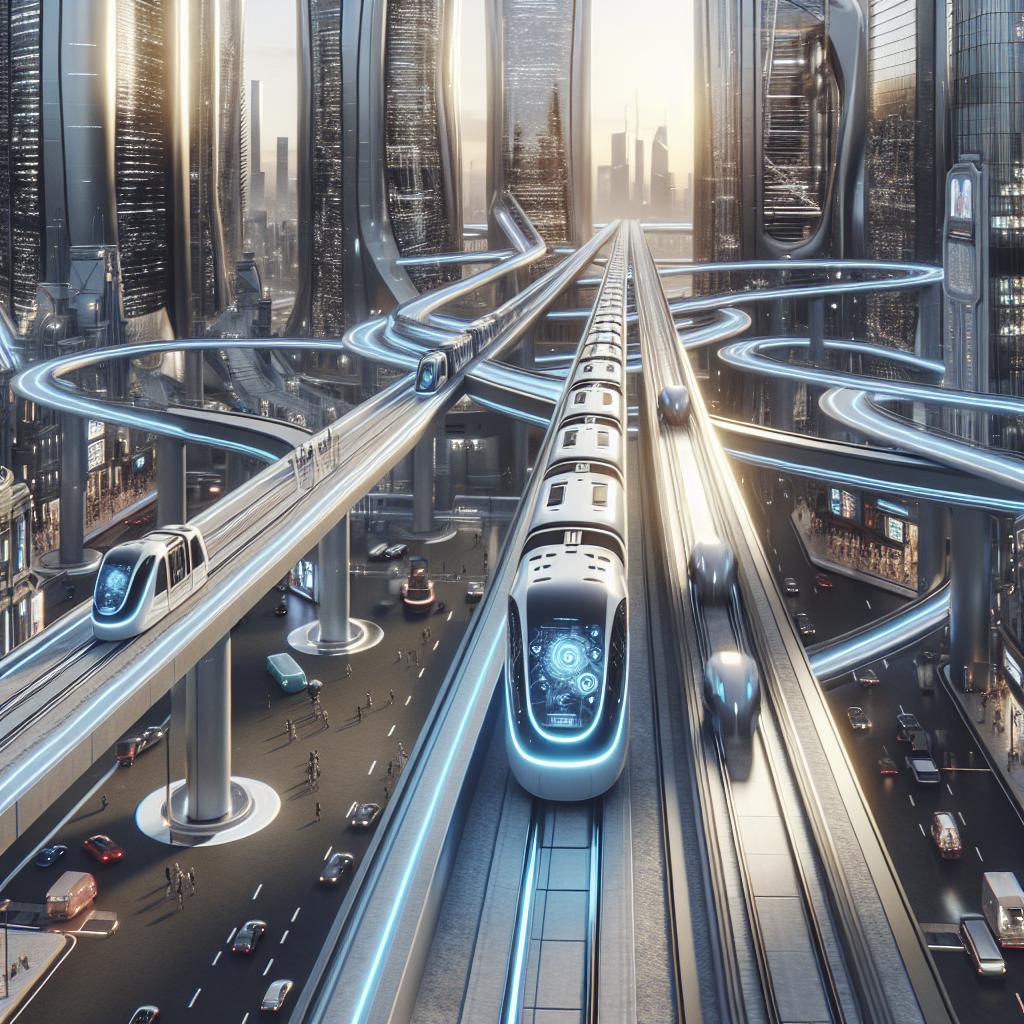The Future of AI-Powered Autonomous Trams in Transportation
In recent years, there has been a growing interest in autonomous vehicles as a way to improve transportation efficiency and reduce accidents. One area that has seen significant development is the use of AI-powered autonomous trams. These trams are equipped with advanced artificial intelligence systems that allow them to navigate traffic, pick up and drop off passengers, and even communicate with other vehicles on the road.
Autonomous trams have the potential to revolutionize public transportation systems by providing a safe, efficient, and environmentally friendly mode of transport. In this article, we will explore the future of AI-powered autonomous trams in transportation and discuss the benefits and challenges of implementing this technology.
Benefits of AI-Powered Autonomous Trams
1. Safety: One of the main benefits of AI-powered autonomous trams is improved safety. These trams are equipped with sensors and cameras that allow them to detect obstacles, pedestrians, and other vehicles on the road. This technology can help prevent accidents and reduce the number of injuries and fatalities on the road.
2. Efficiency: Autonomous trams are able to operate more efficiently than traditional trams driven by humans. They can optimize their routes, adjust their speed based on traffic conditions, and reduce the time spent waiting at stops. This can help reduce congestion on the roads and improve the overall flow of traffic.
3. Environmental Benefits: AI-powered autonomous trams are also more environmentally friendly than traditional trams. They are often powered by electricity, which reduces greenhouse gas emissions and air pollution. In addition, their efficient operation can help reduce the overall energy consumption of public transportation systems.
4. Accessibility: Autonomous trams can also improve accessibility for passengers with disabilities. These trams can be equipped with ramps, elevators, and other features that make it easier for passengers with mobility issues to board and disembark. This can help make public transportation more inclusive and accessible to all members of the community.
Challenges of AI-Powered Autonomous Trams
While the benefits of AI-powered autonomous trams are clear, there are also several challenges that need to be addressed in order to successfully implement this technology. Some of the main challenges include:
1. Regulatory and Legal Issues: One of the main challenges of implementing AI-powered autonomous trams is navigating the complex regulatory and legal landscape. There are currently no clear guidelines or regulations governing the use of autonomous vehicles in public transportation systems, which can create uncertainty and barriers to adoption.
2. Safety Concerns: While autonomous trams have the potential to improve safety on the roads, there are also concerns about the reliability and safety of the technology. There have been several high-profile accidents involving autonomous vehicles in recent years, which have raised questions about the safety of these systems.
3. Infrastructure Requirements: Implementing AI-powered autonomous trams will also require significant investment in infrastructure. This includes installing sensors, cameras, and other technology on trams, as well as upgrading roads and traffic signals to support autonomous vehicles. This can be a costly and time-consuming process.
4. Public Acceptance: Finally, there may be resistance from the public to the idea of autonomous trams. Some people may be hesitant to trust their safety to a machine, or may have concerns about the impact of autonomous vehicles on jobs in the transportation industry. Building public trust and acceptance will be crucial for the successful implementation of AI-powered autonomous trams.
FAQs
1. How do AI-powered autonomous trams work?
AI-powered autonomous trams use a combination of sensors, cameras, and artificial intelligence algorithms to navigate traffic, pick up and drop off passengers, and communicate with other vehicles on the road. These trams are programmed to follow a set route and can adjust their speed and route based on traffic conditions.
2. Are AI-powered autonomous trams safe?
While there are concerns about the safety of autonomous vehicles, AI-powered autonomous trams are designed to prioritize safety. These trams are equipped with advanced safety features, such as collision detection systems and emergency braking systems, that help prevent accidents and protect passengers and pedestrians.
3. How will AI-powered autonomous trams impact public transportation systems?
AI-powered autonomous trams have the potential to revolutionize public transportation systems by providing a safe, efficient, and environmentally friendly mode of transport. These trams can help reduce congestion on the roads, improve accessibility for passengers with disabilities, and reduce the overall energy consumption of public transportation systems.
4. What are the main challenges of implementing AI-powered autonomous trams?
Some of the main challenges of implementing AI-powered autonomous trams include regulatory and legal issues, safety concerns, infrastructure requirements, and public acceptance. Addressing these challenges will be crucial for the successful adoption of this technology in public transportation systems.
In conclusion, the future of AI-powered autonomous trams in transportation holds great promise for improving safety, efficiency, and accessibility in public transportation systems. While there are challenges that need to be addressed, the potential benefits of this technology are significant. By investing in research, development, and infrastructure, we can work towards a future where autonomous trams play a key role in shaping the transportation systems of tomorrow.

